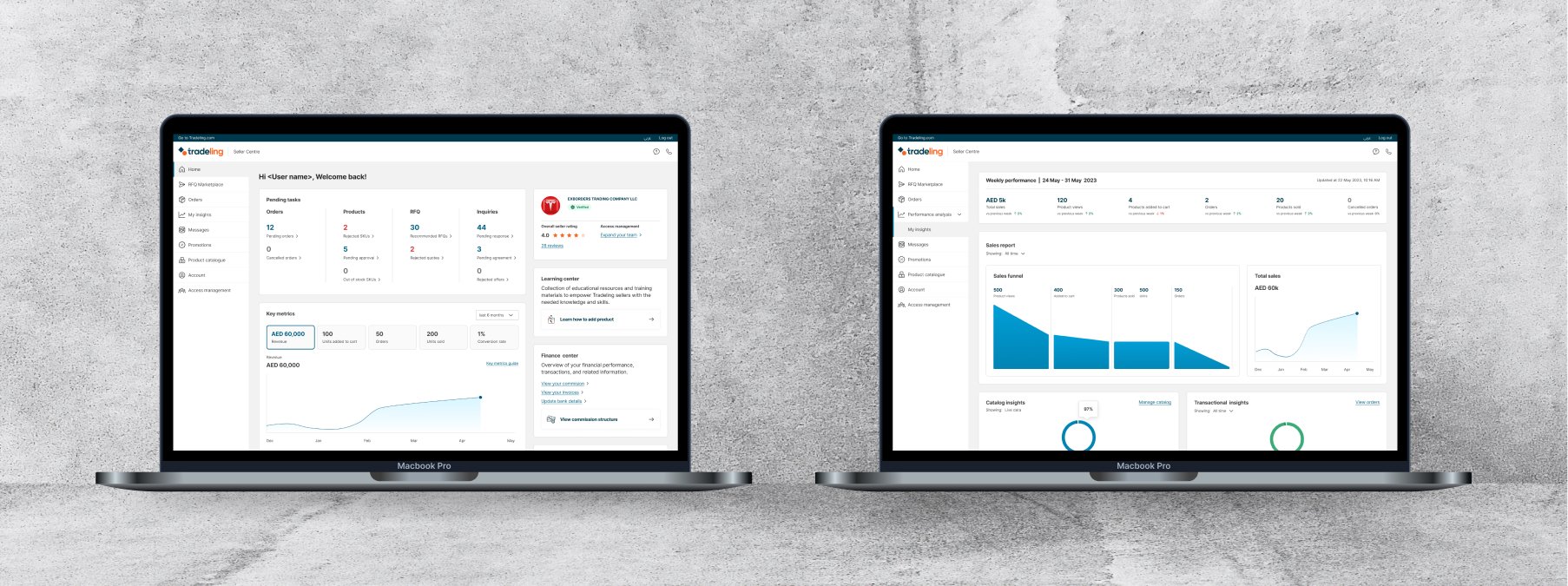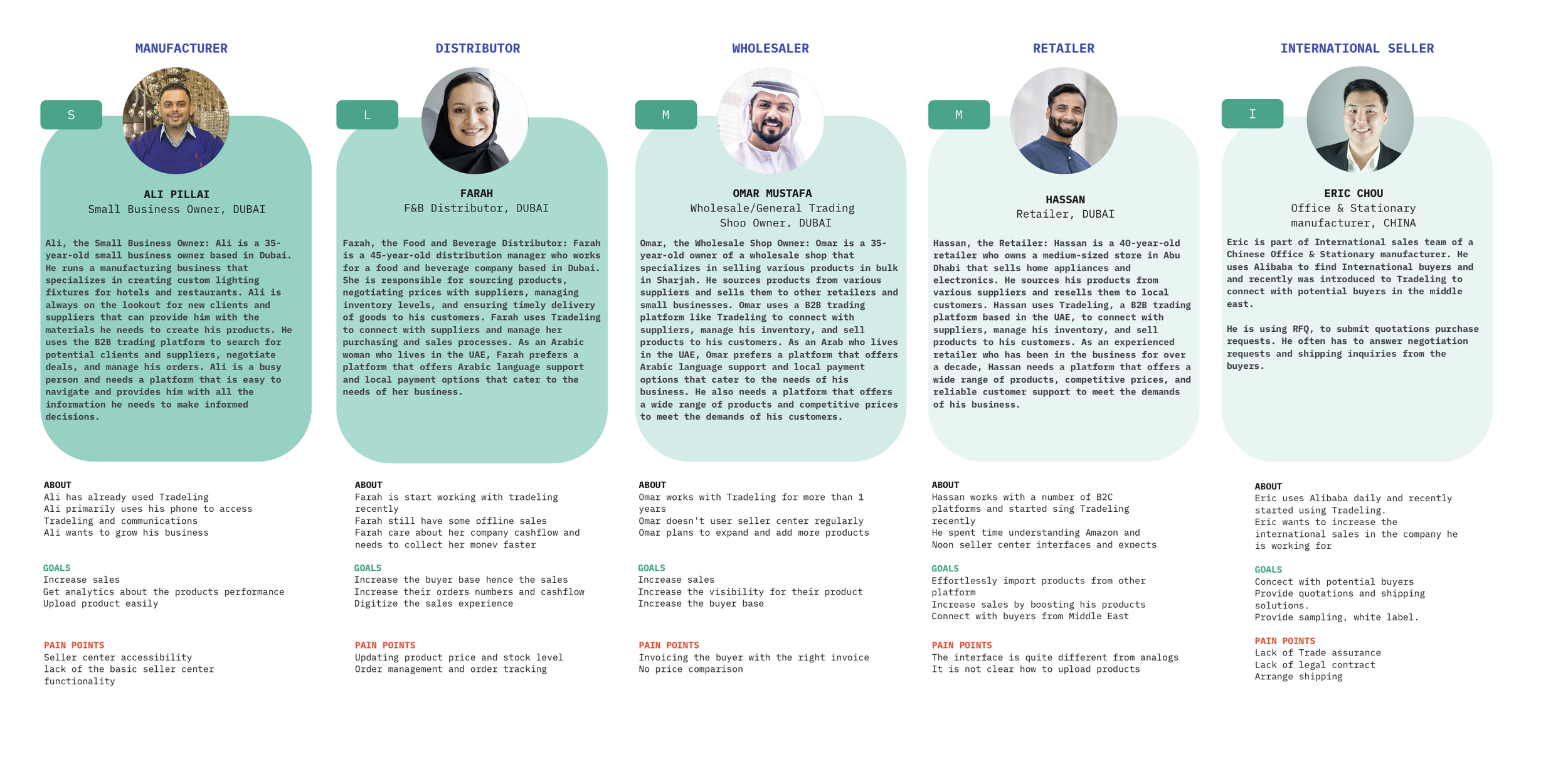OBJECTIVE
At Tradeling, we conducted user research with the sellers. The most significant outcome was that the seller dashboard didn’t contain useful market insights and seller analytics. Thus we decided to revamp it to help sellers to grow and succeed on the platform. By providing valuable insights to sellers and incentivizing them to take specific actions, can help sellers to boost their performance, stay competitive, and achieve their goals.
CHALLENGES
Creating an insightful dashboard requires data. Thus it was important to analyze the existing data collection processes. After we defined the required data points, the tech team needed to make sure that the numbers are accurate and collected within a defined time range. Another challenge was the level of transparency with the sellers. Business didn’t want to disclose some numbers with sellers due to business priorities.
PROCESS OVERVIEW
My PM created the project brief based on business requirements and the user research conducted with the domestic and international sellers. On a Miro board I documented the design objective, problem statements and the documentation of the seller research. Firstly I did the benchmarking of Seller insights pages of other e-com platforms. Secondly I grouped the data points we have been collecting from sellers and I ranked and grouped them based on their category and importance. I had a couple of review cycles to validate the data points with the business and tech team. When the data points are aligned, I designed the high level wireframes which were validated by business and I finalized the UI design.
SUGGESTION
Show seller performance insights by a Key metrics graph (product views, add to cart, orders, conversion rate)
Show a console of the consolidated list of pending tasks to help sellers to perform their day to day tasks.
Help sellers to manage their products by listing their most and least performing products with specific actions like boost or remove from catalog.
Provide market visibility by listing the most and least performing products from other sellers per category with specific actions like clone products. Show most searched keywords in the marketplace per category. Leverage these keywords for product boosting in the upcoming phases.
Add quick links, entry points for the learning center and joining webinars.
THE TEAM
Myself as the lead product designer, my product manager Hassan Elrouby and the tech team.
PROCESS OVERVIEW
Prior to the seller dashboard project, I already created seller personas. I used these personas to group the features and seller needs.
After receiving the brief, I analyzed the existing data points and proposed new ones based on the seller’s needs. Afterwards I grouped these data points based on their category and importance.
After we aligned on the data points, I created 4 stages of the same dashboard based on the seller personas.
After the wireframes were signed off, I created the UI design based on the visual benchmarking. In the product insights page it was important to provide tips on how to maintain the high performing products and boost the performance of the least performing products.




